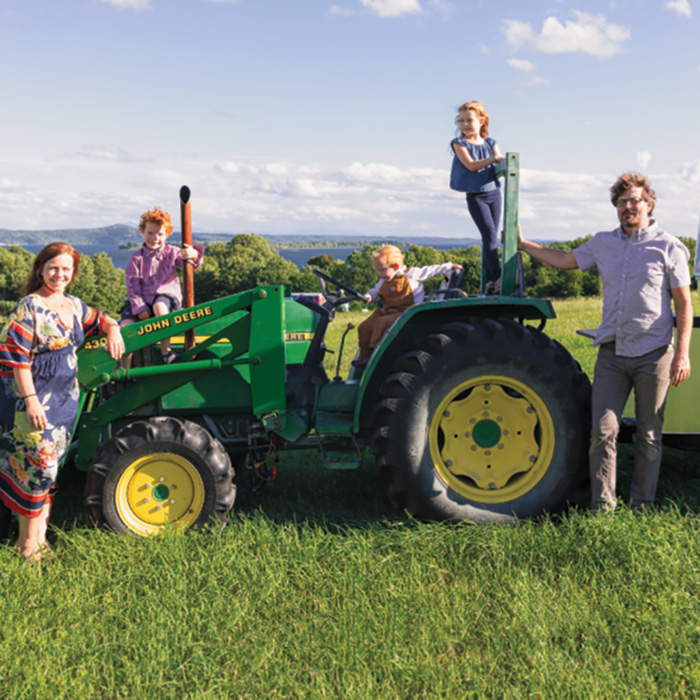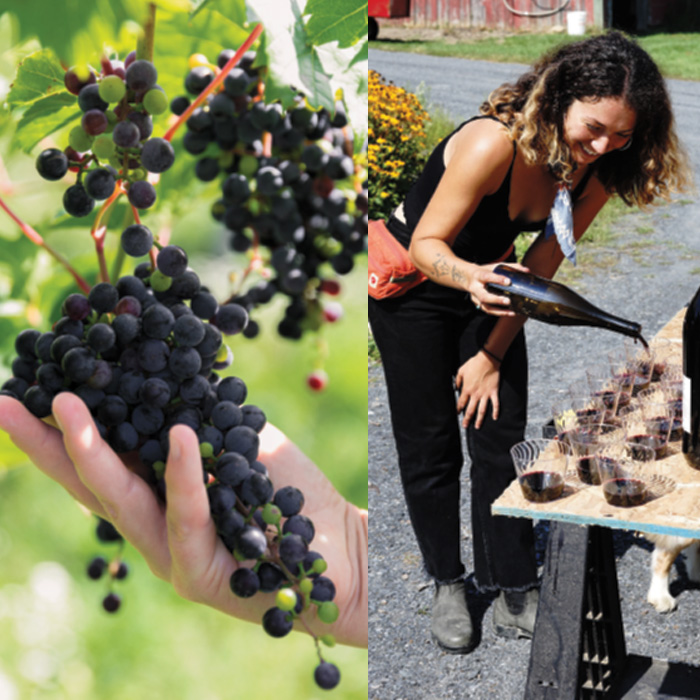Gazing over the expansive hillsides of Ellison EstateVineyard in Grand Isle, you almost feel as though you’ve been transported to the Scottish highlands. The 50 dazzling acres of countryside are speckled with grazing sheep and proffer sweeping views of Lake Champlain, framed by the Adirondacks on one side and the Green Mountains on the other.
Founded in 2018 by Kendra and Rob Knapik, who also operate a cellar and tasting room in Stowe, Ellison Estate Vineyard exemplifies the exciting movement in Vermont wine and produces some of the most groundbreaking local wines: bright and balanced bottles crafted with little-known grape varietals that pay homage to the island’s terroir.
Ms. Knapik—a lively, friendly self-professed “wine geek”—is a veterinary oncologist; the affable and easygoing Mr. Knapik chairs the physics department at Norwich University. Prior to establishing Ellison Estate Vineyard, they were looking for a way to find flexibility with their growing family and for their work to become more integrated into their lives.
They initially thought opening a farm to table ice cream business, where they had visions of raising their own cows,might be the ticket to the lifestyle they craved. But a long love of wine prompted Ms. Knapik to take a University of Vermont viticulture course on a whim. She began to ponder the idea of a business making wine instead of sundaes. But could fine wine be crafted in the notoriously cold and rainy Vermont climate?
Where to Find Vermont Wine
Pick up a bottle at Dedalus, Cork, Commodities, Public House, and Edelweiss in Stowe. Or take a day trip to the tasting room at Ellison Estate Vineyard.


